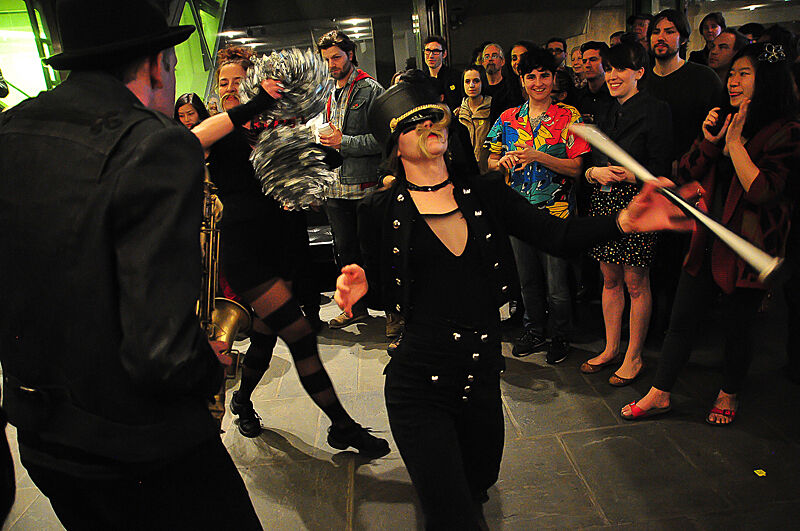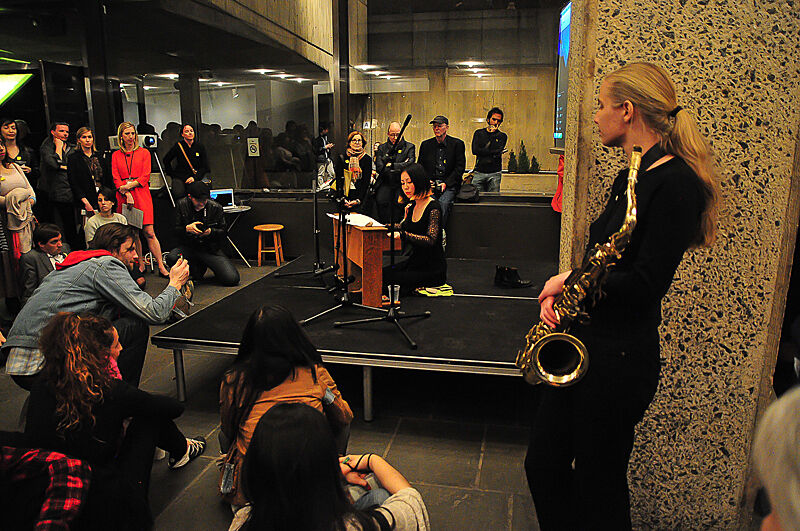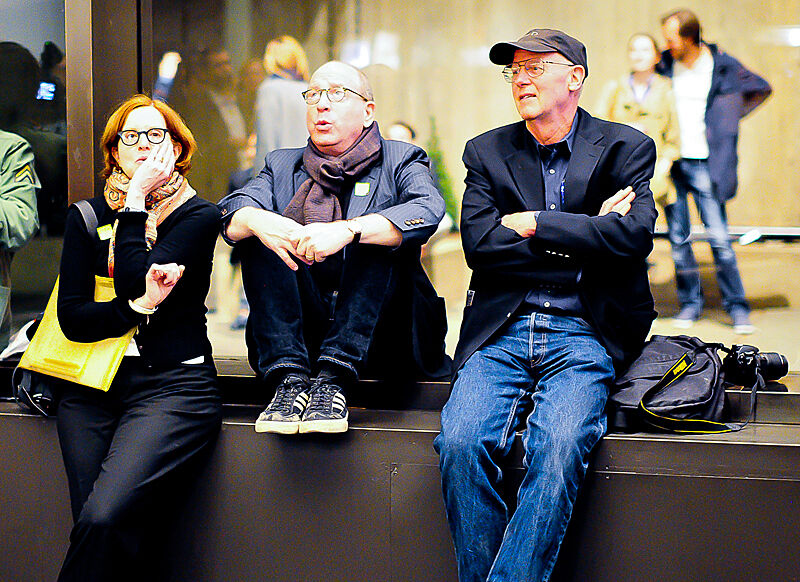Joanna Malinowska: Fieldwork
May 11, 2012
Engaging with painting, sculpture, performance, and video, the diverse projects of Joanna Malinowska are often inspired by her interest in cultural anthropology. On April 13, Public Programs invited Malinowska to construct an evening of discussion and demonstration that further explored key aspects of her contributions to the Biennial 2012 exhibition. In an event she titled Fieldwork, Malinowska recruited the Hungry March Band to stage a convergence of two groups of musicians playing stylistically different music. Malinowska cites the experimental music of Charles Ives as an inspiration for her project. Ives typically integrated many diverse musical traditions and styles into a single composition. One group started in the Sculpture Court, the other on the sidewalk in front of the Museum. A lively cacophony permeated the galleries as they marched around and towards one another, culminating in a “collision” in the Lower Gallery.
The work Malinoswka created for the Biennial is just as multifaceted as the evening she curated: both incorporate a wide range of media and artistic references. Her sculpture From the Canyons to the Stars (2012), refers to Marcel Duchamp’s work Bottle Rack (1914). In the early twentieth-century, Duchamp famously presented this functional object as art and created the world’s first readymade. While Malinowska intentionally mimics the spiked cylindrical shape of this icon of modernism in her work, she abandons the original metal medium for replicas of the tusks of walruses and mammoths native to the Arctic region. The object, then, alludes to both the culture of Western modern art and the totems and rituals of of indigenous cultural traditions. Malinowska, however, privileges neither reference over the other, as it is their juxtaposition—the integration of seemingly incongruous cultural references into a single piece—that ultimately interests her. Will these diverse elements produce only chaos and noise or will they unexpectedly complement one another to create something beautiful?
In addition to From the Canyons to the Stars, Malinowska also “smuggled” a painting created by the imprisoned American Indian Movement activist Leonard Peltier and hung it in the Biennial exhibition as a performative intervention. This action allowed the Polish-born Malinowska to publically question both her own inclusion in an American art museum, as well as the absence of Native American art in the Whitney’s collection. After the Hungry March Band’s “collision,” Malinowska introduced another juxtaposed element, allowing the assembled crowd to Skype with Dorothy Ninham of the Leonard Peltier March for Human Rights. Ninham discussed the plight of Peltier, his work hanging in Malinowska’s Biennial installation, and the organization’s current cross-country march to Washington, DC.
Next, Malinowksa arranged for her friend Masami Tamihisa to play the Moonlight Sonata on a toy piano. She invited guests—and some primed and practiced volunteers recruited through Craigslist—to “howl” for over six minutes after the performance, an experience that Malinowska staged for its purported therapeutic value. The program ended with a longer performance by the Hungry March Band musicians. In her juxtaposition of these ostensibly disparate elements, Malinowska seeks to show that similar ideas arise in various parts of the world without direct interaction or influence. Ultimately, she wants her work to reveal the reality of a collective consciousness that connects us all, regardless of time, space, or culture.
By Elizabeth Pisano, Education Intern



